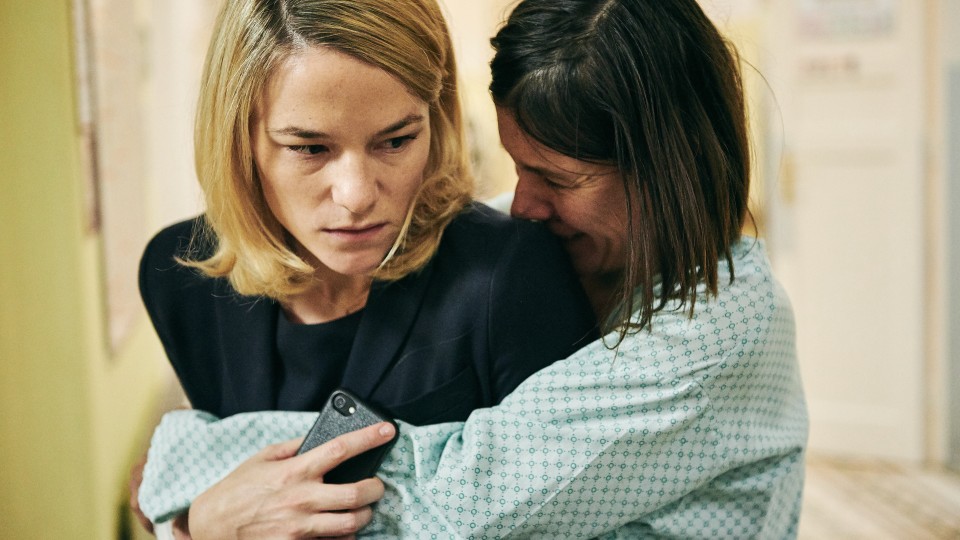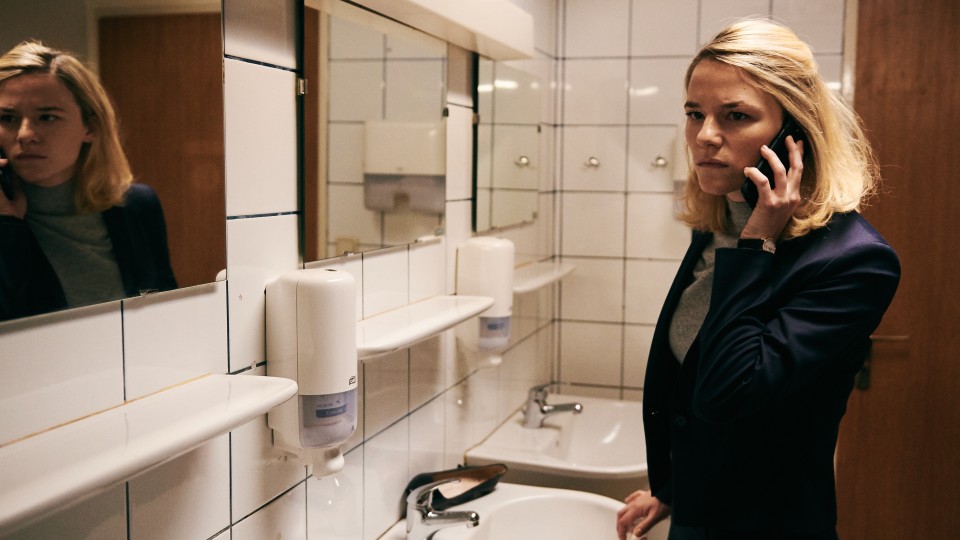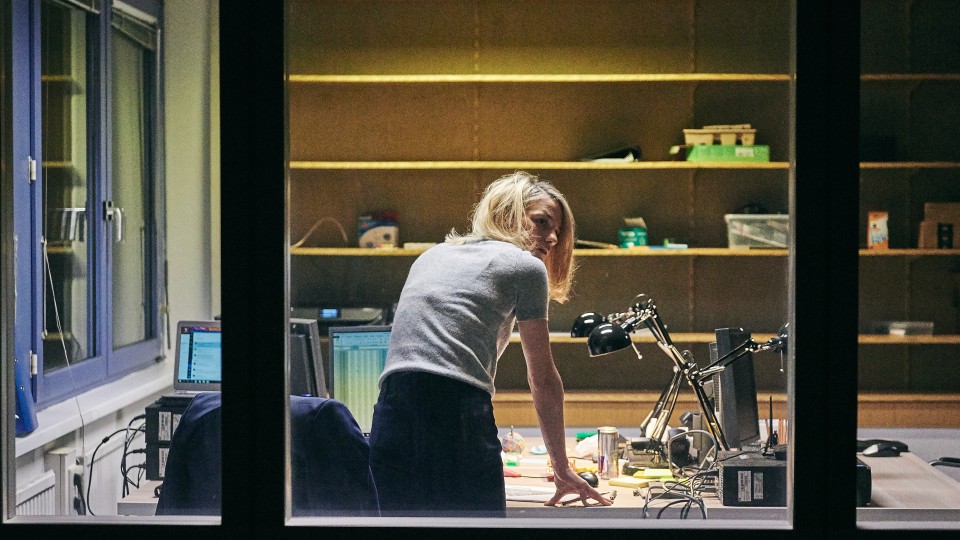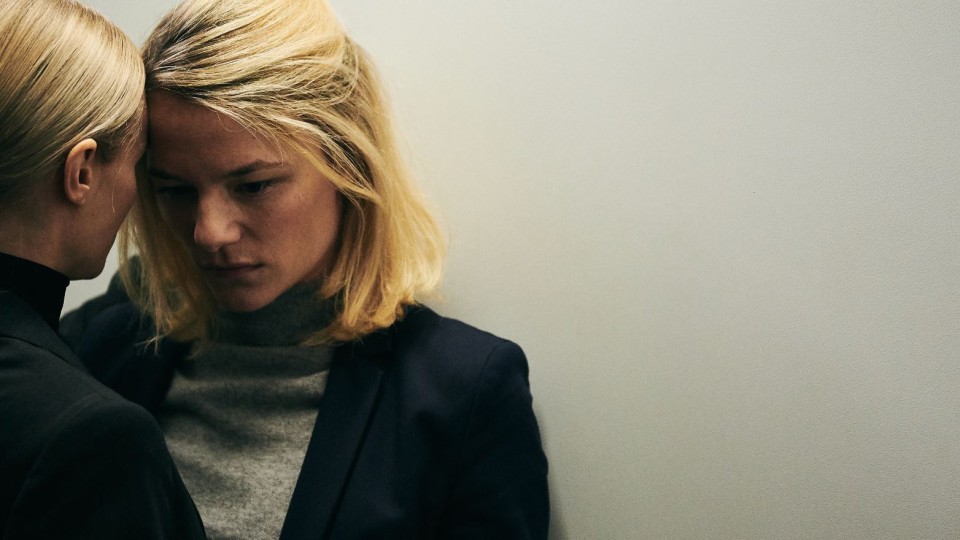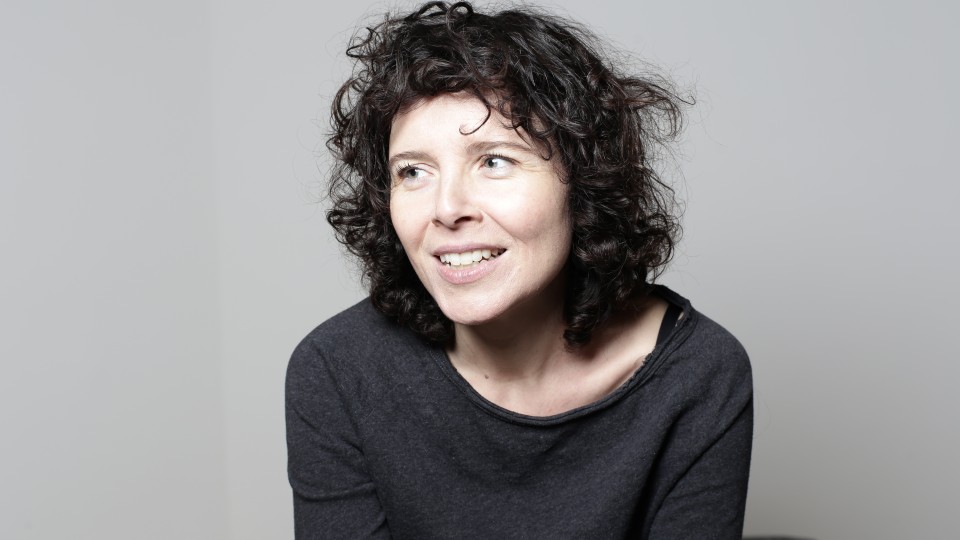Two sisters who are polar opposites: one appears to embody perfection, total commitment to achievement and optimization, while
the other suffers from a psychiatric condition causing loss of control and debilitating weakness. Lola does everything she
can to disown her sister, while Conny does everything she can to compel attention from her sister. Marie Kreutzer’s The Ground Beneath my Feet follows two women, at first sight such complete opposites, as they struggle with family links and the merciless professional
world in their attempt to save themselves.
In The Ground Beneath My Feet you engineer a collision between two worlds: one is a world of high performance, rationalisation and control, while the other
is a world of weakness, loss of control and failure to perform. Was the collision of contradictory forces and aims in the
context of our present situation one of the impulses behind this narrative?
MARIE KREUTZER: I often don't really know which initial thought led me into a project. I have been interested in both these approaches for
a long time. Several years ago I made a short documentary film about a woman who was a management consultant, because I was
fascinated by that professional world. I knew from that experience that you can't actually observe that milieu at work, because
everything they do is on a strictly confidential basis. And I've been interested in psychiatry ever since childhood; I had
an aunt who suffered from psychiatric problems. I remember visiting her in a clinic when I was a little girl, and that mixture
of fascination and revulsion – which is probably the attitude many people have to those institutions – developed
in me at an early stage. At some point the story crystallized from both these influences. Although it isn't autobiographic
in any sense, it does have a great deal to do with me, particularly in the sense that wanting and needing to function, wanting
and needing to manage everything, plays such a large role in my life and probably in many other people's lives. Interestingly
enough, I only became fully conscious of this during the later stages of editing.
Even though you had made that short documentary and had memories of visiting a psychiatric clinic, I suppose the development
of the screenplay involved thorough research into both those worlds. How did you learn more about the way they work and the
language they use? Did you perceive opposing poles and perhaps also parallels?
MARIE KREUTZER: The extensive research was one of the reasons the screenplay work took several years; although it wasn't a constant process,
it would not have been possible to write the screenplay quickly. Right up to the end – and even while we were filming
– I asked psychiatrists and psychologists, as well as management consultants, to read it. Even during the editing I had
it checked once again, and there was actually a change during the sound editing, because in psychiatry terminology and also
certain approaches are constantly being modified.
When you also concerned by young members of the workforce at the highest level being exploited in terms of training and salary,
so their private lives and friendships suffer, solidarity is rendered virtually impossible and the individual as entirely
alienated from his or her self?
MARIE KREUTZER: My concern was to create a depiction of the life of this young woman which was extreme but, in filmic terms, not exaggerated.
But beyond that of course I'm also interested in how we all function in a performance-oriented society, and the extent to
which we are programmed to function according to those criteria.
With the exception of one conversation she mistakenly imagines is a moment of intimacy, your protagonist Lola doesn't have
any private dialogue at all. What does it mean for your task as a writer if you can only depict a character through her relationship
to her work and the everyday tasks she performs?
MARIE KREUTZER: It's an important aspect of Lola’s story that she doesn't have any private life, but at the same time it's also a factor
she doesn't necessarily appreciate. In fact I only talked to management consultants who no longer work in that business, but
I did get the impression that the life of a management consultant is sometimes like that of a member of a sect, and the people
involved might not question the way they lead their lives for years on end. The former management consultants who allowed
me to make use of their knowledge all confirmed that it had been impossible for them to maintain friendships or have any sort
of long-term relationship. The consultants shown in the film are all between 20 and 30, they all had a very ambitious attitude
towards the profession at an early age, and they also all feel superior to other people who – in their view – have
less important jobs. So friends and family don't have the same value for these people as they do for me now, for example.
Which challenges did you set yourself in depicting this psychiatric condition? To what extent were you also interested in
breaking down the perceptive boundaries of the audience between fantasy, dream and reality?
MARIE KREUTZER: There is one scene I find very inspiring and moving in Requiem by Hans Christian Schmid, where Sandra Hüller, who suffers from a psychiatric illness and has had a breakdown, is obviously
hallucinating, curled up on the floor of a canteen. It fascinated me so much to see something like that on screen without
being instructed in any visual way what was happening to that person at that moment. It was very important to me from the
start to make the film as a drama, not as a thriller, even though there are gruesome thriller-type elements. There were lots
of discussions with all the departments, because of course it would have been tempting to amplify Lola's thoughts and experiences
by formal means. But I wanted to narrate everything on the same level, as straightforwardly as possible. That was my basic
premise, the reference point I used repeatedly to extract myself from this temptation. Everything has to appear real to the
viewer.
Apart from the scenes where Lola is running, there are hardly any moments when she is shown outdoors. Perhaps some reference
to her isolation, in a double sense? It certainly seems that the emphasis in terms of space was on interiors. But at the same
time, you clearly had to find the appropriate external backdrop. How did you end up choosing Rostock?
MARIE KREUTZER: The biggest fundamental question was: which medium-sized German city will Lola work in? Former management consultants explained
to me that you wouldn't necessarily be sent to a cool place; you just end up "somewhere". One year during the Berlin Film
Festival I took a look at some cities in the former East Germany, and Rostock was one of them. I found the place fascinating,
because it's hard to categorize. It's on the coast, so you have seagulls flying around, but it also has the air of a satellite
town – and then the old town is so picturesque. A large part of the film is set there, but we hadn’t planned to
shoot the interior scenes there as well. Which meant an exhausting search for interior locations that would fit in with what
I felt was so individual about Rostock, and then the battle to secure those locations. In the end I was lucky. The hotel in
Vienna we were planning to use as a hotel in Rostock didn't work out, and we couldn't find any substitute in Vienna where
the interior and exterior would have matched. So we did end up filming in Rostock after all. It was really luxurious. We used
the view from the window a lot. As it happens, there was a big Christmas markets as well, which bothered us at first until
I realized that we could use it to establish another very individual visual level. So we ended up shooting a lot at the original
locations.
Mirror images, duplications and reflections play an important part in this narrative about schizophrenia. What were the crucial
points about working with your long-term camerawoman Leena Koppe?
MARIE KREUTZER: The most important thing was that this time we were able to get what we wanted right at the beginning and shoot on 35mm stock.
I shot all my works at Film Academy, and The Fatherless, on film, but then it began to get harder and harder. My last two films were really my first digital works. But I simply
find film stock better to work with. It's much more alive. Another important point was the lighting. This time I wanted a
very natural, neutral, "unstructured" light. Of course there are always a lot of disadvantages about filming in winter, but
on the other hand I've come to value a great deal the gentler quality of winter light in comparison with harsh summer light.
Leena and I don't even discuss the composition of the shots in detail anymore: we have our own way of working. Even to the
extent that we don't plan the individual shots in advance anymore; instead, we work very intuitively on the set.
Your last film, We Used to be Cool, is concerned with the collapse and disintegration of youthful ideals, while The Ground Beneath My Feet depicts a young woman who wants to achieve something in her job, in a world where there is no room for her personal story
and weaknesses. Both these films deal with the generation who, roughly speaking, were born in the 1980s and have been able
to make the most of their opportunities. Is it particularly important to you to examine the less visible fault-lines in the
lives of this generation, perhaps precisely because they might be considered less "legitimate"?
MARIE KREUTZER: Yes, I would agree with that. After We Used to be Cool I was repeatedly confronted by the question: "But what exactly are the problems you're talking about?" Sometimes, the mere
fact that you might not have any problems, objectively, or might feel you're not allowed to have any, can be exactly what
causes them. And I'm very interested in the particular question: "What can be painful behind a happy or successful life?"
Precisely because control and performance are so important in our society, the fear of losing something in those areas can
have a powerful effect on us. The stories I write come back to that point again and again.
Interview: Karin Schiefer
December 2018
Translation: Charles Osborne

